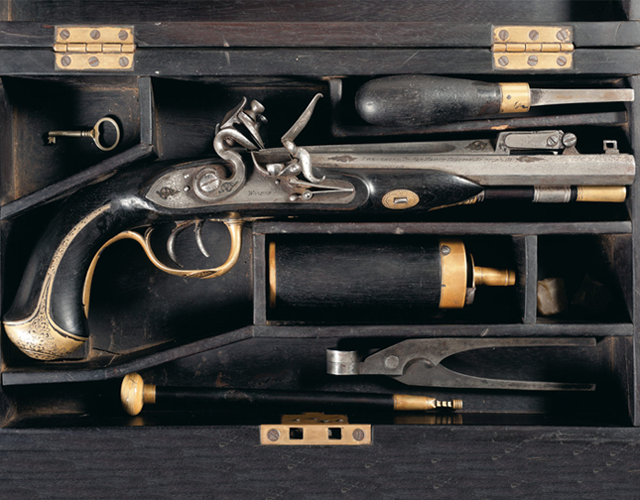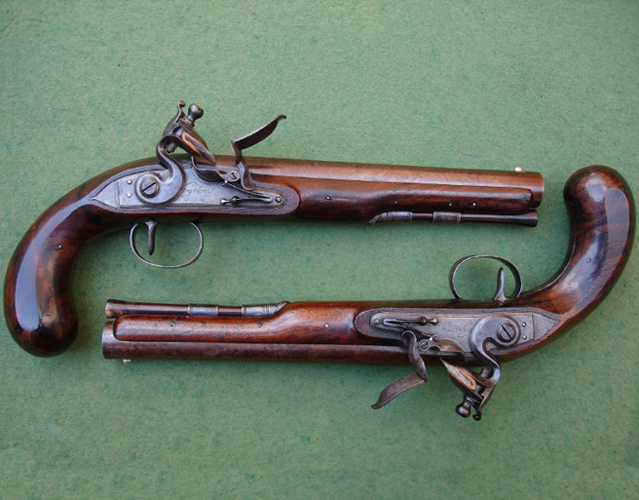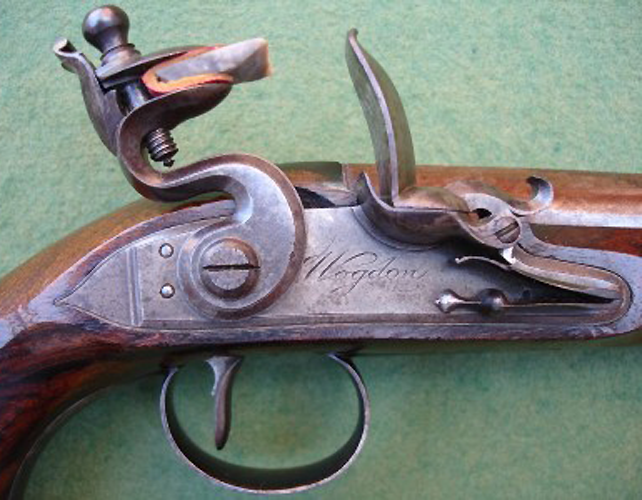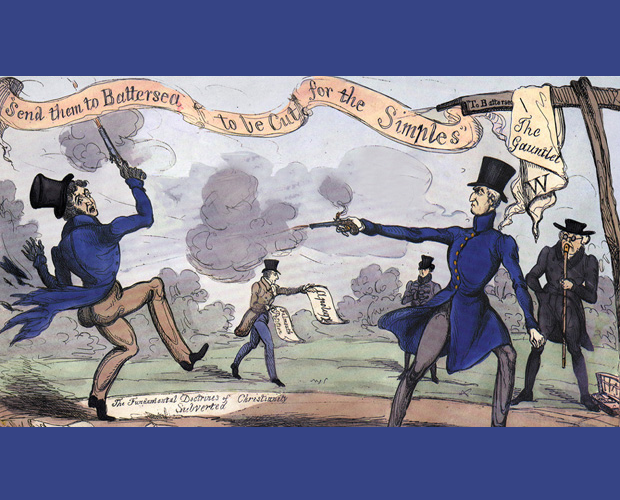The Pistols of Robert Wogdon
Just the other day, I was talking to a friend of mine who lives in London, and somehow we got onto the subject of flintlock pistols. (No, no, it’s not that we are bellicose or bloodthirsty—we are both history geeks, so we often digress into arcane topics, such as dueling.) I started waxing poetic over Joe Manton, and how we Regency authors always have our heroes carry Manton firearms. Well, he prompted countered that he preferred Robert Wogdon’s weapons—and in fact owned a Wogdon pistol (which he’s actually fired and says throws a bullet with frightening force.) Wogdon? The name didn’t trigger a spark. So naturally, I had to do a little research . . .
Which is something I always find fascinating. For me, it’s great fun to learn something new, so allow me to fire off a few highlights. Robert Wogdon is considered the preeminent British gunsmith of the Georgian/early Regency era. His specialty was his meticulously crafted—and deadly accurate—dueling pistols. In fact, his name became so synonymous with the ritual that a duel was commonly referred to as a “Wogdon affair.” Frederick, Duke of York, is said to have used a Wogdon weapon when he squared off against Lieutenant Colonel Lenox in 1789. (Wogdon pistols played a memorable part in American history too, as they were the weapons used the famous duel between Aaron Burr and Alexander Hamilton.) A poem written in 1783, entitled Stanzas on Duelling, leads off with this rather chilling salute: “Hail Wogdon! Patron of that Leaden death . . .”
Wogdon was born in 1737 and was apprenticed to the Irish gunmaker Edward Newton of Grantham, Lincolnshire. (Interestingly enough, Joseph Manton was born in Grantham, so perhaps there was something in the air there that sparked great gunsmithing ability.) He moved to London in 1764, and in 1795 went into partnership with John Barton, forming the formidable company of Wogdon & Barton. From 1801-1803 they were listed as gunmakers to the Bow Street “Runners”
Wogdon weapons were rather plain and unembellished, but although not much to look at, they were prized for their balance, reliability and “pointability.” (The flat top of the octagonal barrel was parallel to the bore, which made it a natural aiming plane.) Wogdon felt it was key to distribute the weight to make the weapon feel like a natural extension of the arm when raised. Another feature was the hair, or set, trigger, which required far less pressure to fire, thus resulting in a more accurate shot.
Now, a little about the general customs of dueling in the Georgian/Regency era that I uncovered during my research. The standard dueling pistol in England was made with a .50 caliber smoothbore barrel, which was considered more “sporting” than a rifled barrel. (Rifling imparts spin to the bullet, thus creating more accuracy.) However, some “cheating” did go on—even the great Joe Manton was known to have added a discreet amount of rifling to his weapons, ending it several inches short of the muzzle so it was harder to detect.
According to the “code duello,”(yes, there were very strict rules, however unwritten, governing affairs of honor) the bullet was supposed to be bare—that is, unpatched—on the theory that it made for a cleaner wound. (The fabric of a patch, with its accompanying gunpowder grit, was thought to add to the risk of infection. But then again, a bullet would usually be passing through clothing, so I’m not quite sure it made much difference!)
Another provision of the code was that a shot was deemed “fired” even if the pistol malfunctioned and the hammer didn’t set off bullet. Since each duelist only got one shot, it was imperative to have a reliable weapon—hence the fact that dueling pistol were so well-crafted.







